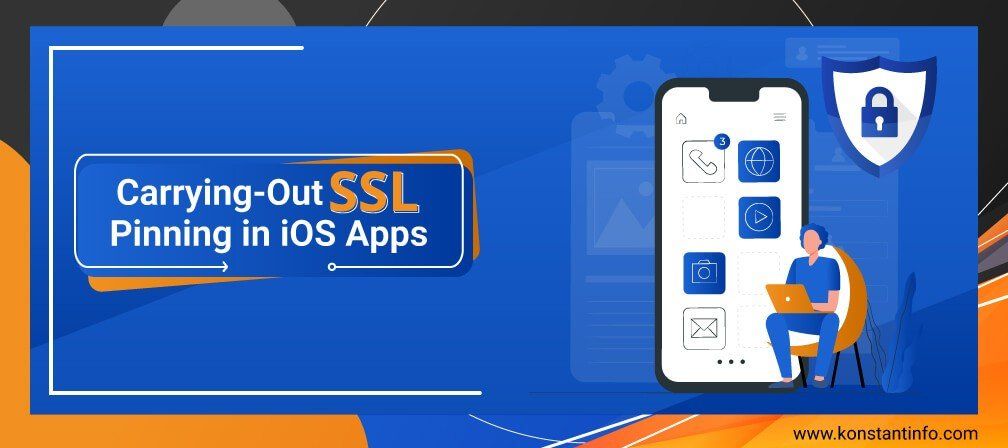Carrying-Out SSL Pinning in iOS Apps
- By Konstant Infosolutions
- •
- 02 Apr, 2021
- •

As we create a website/application to run on a server and pin a certificate into the code, we always connect to that server securely. There are three things that the client and server must agree upon:
(1) How will keys be exchanged?
(2) How will data be encrypted?
(3) How will messages be marked as authentic?
But what if someone intercepts the communication and serves a different website, it then becomes difficult to differentiate from the original one. It is the shady certificate, termed as a man-in-the-middle attack. Another one is DNS poisoning. Your client-side code will validate it even after serving a different domain – easy spoofing. You're able to communicate with the attacker, who blocked the communication with the server and checked all the data. Let’s find out more about SSL pinning basics!
(1) How will keys be exchanged?
(2) How will data be encrypted?
(3) How will messages be marked as authentic?
But what if someone intercepts the communication and serves a different website, it then becomes difficult to differentiate from the original one. It is the shady certificate, termed as a man-in-the-middle attack. Another one is DNS poisoning. Your client-side code will validate it even after serving a different domain – easy spoofing. You're able to communicate with the attacker, who blocked the communication with the server and checked all the data. Let’s find out more about SSL pinning basics!

In the global smartphone market, entry-level phones account for over half of the shipments. Data, storage, memory, and other limitations are real problems for these phones. Google's vision to make Android accessible to everyone, Android Go App
was introduced by Google. Let’s learn more about the Google Go Android os and how you can create an application for Go os.








